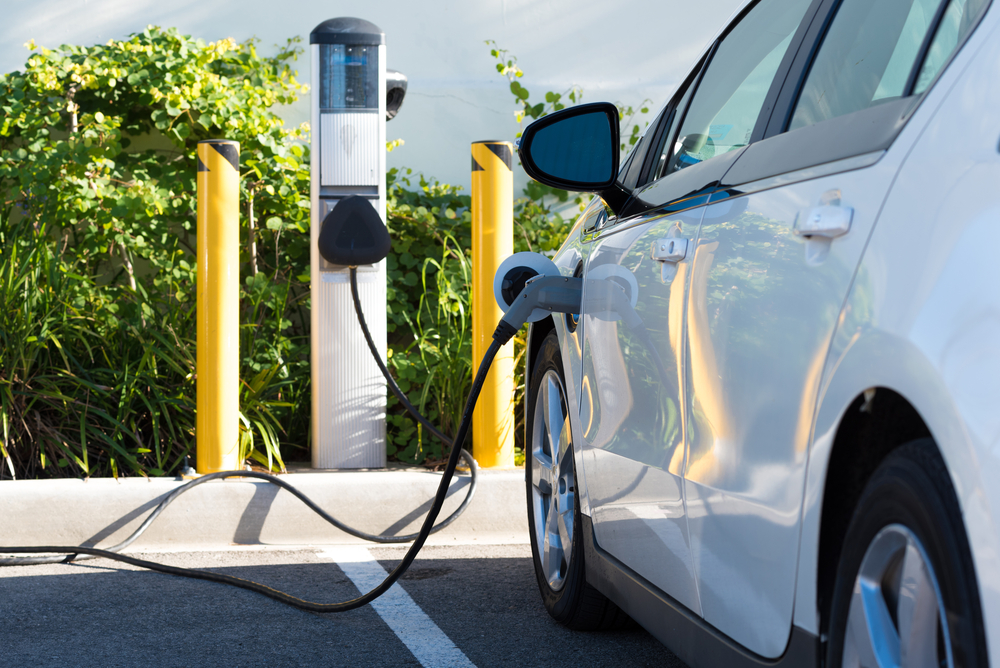Charging Your Electric Car: How Much Is It & Where Should I Charge?

In a world where awareness regarding the state of the environment has spread far and wide, driving an electric car has become a trend among energy-conscious consumers. Conventional vehicles are sources of greenhouse gasses. The carbon emissions coming from their engines impact air quality and increase the earth’s temperature. Thus, using an electric vehicle would be a great way to delay the progress of global warming.
Electric vehicles or EVs may cost more, but their benefits can make the money you spend worthwhile. With many known car manufacturers introducing new models, more and more consumers are giving these vehicles a second look.
How Much Electricity Does an EV Use?
Trips to the gas station to fuel up can be pretty heavy on the budget, what with the rising prices of gasoline. Electric vehicles run on electricity, so you don’t have to pay for gas, which can save you quite a sum. On average, Americans spend between $2,000-and $4,000 per year on gasoline. Although electricity isn’t free, it’s less expensive than gasoline, so an EV is cheaper to run than a gas-fed vehicle.
To determine how much charging an electric vehicle costs, you’ll need to figure out the EV’s efficiency in using electricity. You can calculate this by measuring how many kilowatt-hours (kWh) an electric vehicle consumes in driving 100 miles.
Let’s say that an EV has an efficiency rating of 25 kWh/100 miles. That means it can drive 4 miles on a single kWh. With a 50-kWh battery, that same electric vehicle can reach 200 miles without recharging.
Here are some popular electric car models and brands and their electricity usage.
| Model | kWh per 100 miles |
|---|---|
| Audi e-tron | 43 |
| Ford Mustang Mach-E | 33-36 |
| Kia Niro EV | 30 |
| Nissan Leaf | 30-32 |
| Chevrolet Bolt EV | 29 |
| Hyundai Kona Electric | 28 |
| Tesla Model Y | 27-30 |
| Tesla Model 3 | 25 |
Electricity Cost per kWh
If you plan to purchase an electric car, you’ll want to know how much you’ll have to shell out to charge your vehicle. You compute the costs of running a gas-operated car by determining its miles per gallon (mpg) consumption. However, an electric vehicle uses electricity, so you’ll need to find out the per kilowatt-hour (kWh) cost of electricity.
The price of electricity in the U.S. varies depending on where you live. On average, electricity costs come to around 13 cents per kilowatt-hour. Multiplying the kWh consumption of electric car charging with your area’s electricity rates will give you an idea of how much it takes to charge an EV.
What’s the Cost of Charging An Electric Car?
Most electric vehicles are charged at home, making it easy to compute the charging expenses. But aside from home charging, there are other ways to top up your EV’s battery. Thus, the electric car charging costs will depend on where and when the charging is done.
At Home
Electric car charging is more convenient and cost-effective when done at home. That’s why many electric vehicle owners choose this option. It’s relatively easy to compute the charging cost if you do it at home because you simply tap into your home’s power supply. Using the per kWh rate, you can compute how much powering an EV will add to your electricity budget.
Costs For A Home Charging Set Up
Aside from the cents per kWh electricity rate, you’ll need to factor in the other expenses related to charging electric vehicles. For starters, re-powering your vehicle requires a charger. You can get a cheap Level 1 charger, but it has a slow charging rate.
You can opt for a Level 2 charger that plugs into a 240-volt power source for greater convenience. The higher output accelerates the charging rate significantly. Using this method requires the installation of a charging station, otherwise called the electric vehicle supply equipment. Expect to spend around $500 and $2,000 for the charger, equipment, and installation.
On-Peak
On-peak hours refer to the times when electricity consumption is highest. Because many people access the grid at these hours, you’ll have to pay a premium on electricity rates. The good news is that even charging your EV during on-peak hours, you still save more money than if you use public charging stations.
Off-Peak
Some utility providers charge lower power rates during off-peak hours. These are the times when electricity demand is low. Charging your EV during off-peak hours will help lower your electricity costs. That’s why most electric vehicle owners usually charge during periods of low energy demand, such as the evening till early morning hours.
Public Charging Stations
With the growing popularity of electric vehicles, public charging stations started sprouting across the country. You can use some of these charging stations for free, while others are subscription-based or will require you to pay as you go. Well-known car manufacturers, such as Tesla, Hyundai, and Nissan, provide complimentary charging in some stations.
Level 1
You can charge your EV on Level 1 chargers using the cable that comes with the vehicle. The cable plugs into a standard outlet, and you won’t need to purchase or install other equipment. However, it takes a while for your EV to be fully charged on Level 1 chargers as they provide only 120 volts. The per kWh rate in your area will determine how much you’ll spend to get your vehicle to full charge.
Level 2
You can opt for Level 2 chargers if you want a faster charging rate. However, you’ll need to install a charger and some equipment as the charging station will require a dedicated 240-volt or 208-volt electrical circuit. You can also find these charger types in public charging stations. The average price per charge comes to about $0.30 per kWh on Level 2 chargers.
DC Fast Charging
Do you want a fast fill-up? Then DC charging is your best bet. DC fast chargers use between 200 and 600 volts, so it takes only around 15-45 minutes to get your EV to 80% charge. They need a 480-volt connection, which makes them unsuitable for home use. Moreover, not all EV models come with connectors for DC fast charging. You can find these charger types in shopping malls, rest stops, and offices. Expect to pay around $0.40 kWh for DC fast charging.
Rebates When Using Charging Stations
Installing a Level 2 charging station at home may require some electrical work. That’s because the charging station requires a separate 240-volt circuit. Several California utility providers offer rebates that help offset the installation costs of a Level 2 charging station. Some states also extend federal tax rebates for charging stations.
Money-Saving Charging Tips
There are ways to save money on your charging costs. Here are some tips you can try.
- The charging process slows down significantly when your EV’s battery reaches 80% capacity. If you’re paying by the minute, stop charging when the car’s battery is 80% full to save on costs.
- On cold winter mornings, heat your EV while it’s still plugged in. This lets you avoid drawing power from the battery for heating when you’re already driving.
- Take advantage of EV phone apps that let you set your car’s charging hours. In this way, you can charge the electric vehicle’s battery when power rates are lowest.
Cost of Charging vs. Price of Gas
The cost of charging an electric vehicle varies depending on the electricity rates in the area. Still, studies show that, on average, fueling an EV costs around 60% less than putting gas in a conventional vehicle. That’s because gasoline typically has a higher price than electricity.
FAQs
How Much Does It Cost To Charge An Electric Car At Home Per Month?
Most EV owners charge their cars at home instead of at public charging stations. Factoring in the average price of electricity in the country, expect an additional $30 to $60 to your monthly electric bill if you re-power yours at home.
What Happens If A Tesla Runs Out of Battery?
You’ll have to disregard many reminders to run out of battery in a Tesla vehicle. That includes the directions to the nearest charging station and recommendations regarding speed reduction. But if worse comes to worst and your battery dies, you’ll require a flatbed truck service to take your car to the charging station.
Do Electric Cars Have Alternators?
No, they don’t. Instead, EVs have a DC-to-DC converter. This converter recharges the 12-volt battery by using power from the high-voltage battery pack that powers the vehicle.
Do Electric Cars Need Oil Changes?
Electric vehicles don’t have an internal combustion engine that traditional cars do. This engine has moving parts that require lubrication and hence, oil changes. The lack of a combustion engine eliminates the need for oil changes in EVs.
Final Thoughts
Purchasing an electric vehicle may entail a considerable cash outlay. However, fuel savings and tax rebates can help offset the steep price. Ultimately, your decision to swap your gas-powered vehicle with an EV will depend on your goals.
If you seriously want to save the environment, driving an electric car is a step in the right direction. With an EV, you’ll not only prevent particulates from getting into the atmosphere, but you will also reduce the greenhouse gas emissions that warm the planet.
Updated on
